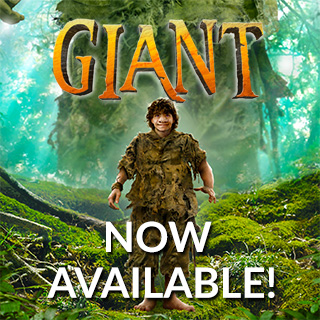Why I Wrote “The Lost Years of Merlin”

If I had to name one story that has shaped my life more than any other, it would be The Lost Years of Merlin.
That may sound surprising — especially for a character who has been woven into myth for more than fifteen centuries. But when I sat down to imagine Merlin not as the legendary wizard of Camelot, but as a lost, lonely boy who washed ashore with no name and no memory, I found myself stepping into a tale I didn’t yet know… but one I felt deeply called to tell.
Did You Know?
- Merlin Book 1: The Lost Years was previously published as The Lost Years of Merlin
- Books 1 – 5 of the Merlin Saga are known as The Lost Years of Merlin epic and can be read as a stand-alone series
The Inspiration Behind The Lost Years of Merlin
Long before I ever wrote a word of The Lost Years of Merlin, I was a student at Oxford, exploring the English countryside. On one of my favorite runs through the hills of Oxfordshire, I discovered a magnificent old oak tree — at least 300 years old — perched at the edge of a farm field. Beneath its vast canopy, I would sit with a book from my backpack and read in the late afternoon light, gazing down at the pink granite rooftops of Oxford.
The very first book I read under that tree? The Once and Future King by T. H. White.
And that’s when it happened: I completely fell in love with the character of Merlin. He wasn’t just a wise wizard. He was a blend of humor and wisdom, mischief and compassion. I never imagined that years later, I would be the one adding new threads to his story — but that ancient oak, and that book, planted a seed.
A Dream That Changed Everything
Fast forward nearly 20 years, and I had long since returned to Colorado and begun my path as a writer. One night, I had a dream so vivid I still remember it clearly to this day.
In the dream, a boy was drowning — swept away by waves, desperate and afraid. With all his strength, he reached upward, only for the sea to finally spit him out onto a rocky shore. As he gasped for breath, gulls screeched overhead. He was alive… but everything was gone. He had no memory of his past, no clue of his identity — not even a name.
And I woke up knowing: That boy is Merlin.
That boy would one day become the most powerful wizard of legend… but not before he faced hardship, loneliness, and enormous questions about who he was and where he belonged.
That dream became the very first scene in The Lost Years of Merlin — and launched what would become a 13-book saga.
Filling in the Gaps of Merlin’s Youth
When I began researching Merlin’s legends, I was amazed by the richness of the tapestry: the Welsh Mabinogion, the works of Geoffrey of Monmouth, Mary Stewart, Shakespeare, even Tolstoy. Yet despite all that had been written, there was a gaping hole — no one had explored Merlin’s youth.
How did he become a wizard? When did he first discover magic? Who helped shape him into the wise, compassionate mentor we know from Arthurian lore?
That gap was daunting… but also irresistible.
As a storyteller, I knew this was my opportunity to ask deeper questions: What were Merlin’s greatest fears? His secret dreams? How did he learn about humility, courage, and love? How did he come to understand the sacredness of nature — and how did that connection shape his magic?
That’s the heart of The Lost Years of Merlin. Not just grand adventures, but an inner journey of self-discovery — one that mirrors our own struggles to understand who we are and how we can make a difference.
A World of Wonders
To bring Merlin’s youth to life, I created the magical isle of Fincayra — a place suspended between earth and sky, history and myth. From the mysterious Haunted Marsh to the enchanted Druma Woods, every root and stone carries meaning. Fincayra became more than a setting — it became a character, and a reflection of Merlin’s growth.
Along the way, Merlin meets unforgettable companions: brave Rhia, tiny but mighty Shim (who may or may not be a giant), and wise creatures like the living stones or the ancient trees of Arbassa. Their friendships, trials, and triumphs helped shape Merlin — and, I hope, resonate with readers, too.
Why Merlin Still Matters
People sometimes ask me: Why Merlin? Why do his stories still matter?
For me, there are three answers:
- Merlin reminds us that we all have a spark of magic inside. Even at our lowest moments — washed ashore, uncertain of who we are — we carry the potential to grow into something extraordinary.
- He connects across boundaries. In every version of his story, Merlin speaks to kings and beggars, animals and archbishops. He bridges divides — and in our world today, we need that more than ever.
- He teaches us the sacredness of nature. His magic doesn’t come from a wand — it comes from listening to the trees, feeling the rhythm of the sea, and drawing power from the natural world in a spirit of humility and awe.
Merlin, at his core, is a guide — not just for Arthur, but for us.
The Journey Continues
Writing The Lost Years of Merlin wasn’t easy. It took me three full drafts just to find the voice of that young boy who had washed ashore. But once I did… the story flowed like a river.
Now, all these years later, I still hear Merlin’s voice — as a young boy, as an elder wizard, and as a constant reminder of the magic that lives inside all of us.
If you’ve never read The Lost Years of Merlin, I invite you to begin that journey now. And if you’ve already walked that path, maybe it’s time to revisit it — and see what new truths are waiting in the mists of Fincayra.
After all… sometimes, the best stories are the ones that help us discover who we really are.

